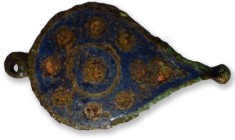Using Google Earth to identify and quantify the looting of archaeological sites: Introduction
In the past, it has been difficult to obtain reliable quantitative, longitudinal information “on-the-ground” about the extent and intensity of archaeological site looting. Most relevant data has been produced through archaeological field surveys, though these remain few in number and are too expensive to repeat at periodic intervals. High-resolution aerial and/or satellite imagery offers a means of identifying and assessing site damage from a distance, though to date the cost of obtaining suitable images has been largely prohibitive. Now, however, the satellite imagery made available on Google Earth is a relatively inexpensive resource that can be used for identifying and quantifying site looting through time. Dan Contreras and Neil Brodie have developed a simple method for producing images of known date that allow the looted area of an archaeological site to be measured using standard GIS software. As images are up-dated on Google Earth, the size of looted areas can be re-measured, thus producing longitudinal estimates of the incidence of looting.
Examples of this research include work in Jordan and Peru. Results of the Peru study have been published in Antiquity, and results of the Jordan study can be found in the Journal of Field Archaeology. These case studies have served to develop an effective methodology that we encourage others to employ and modify for their own uses. In 2010 the Society for American Archaeology also ran a brief article on the research.
Chart and Tabular data: Jordan
Acknowledgement. Contreras and Brodie would like to acknowledge the generous support of the Stanford Archaeology Center which made this work possible.
